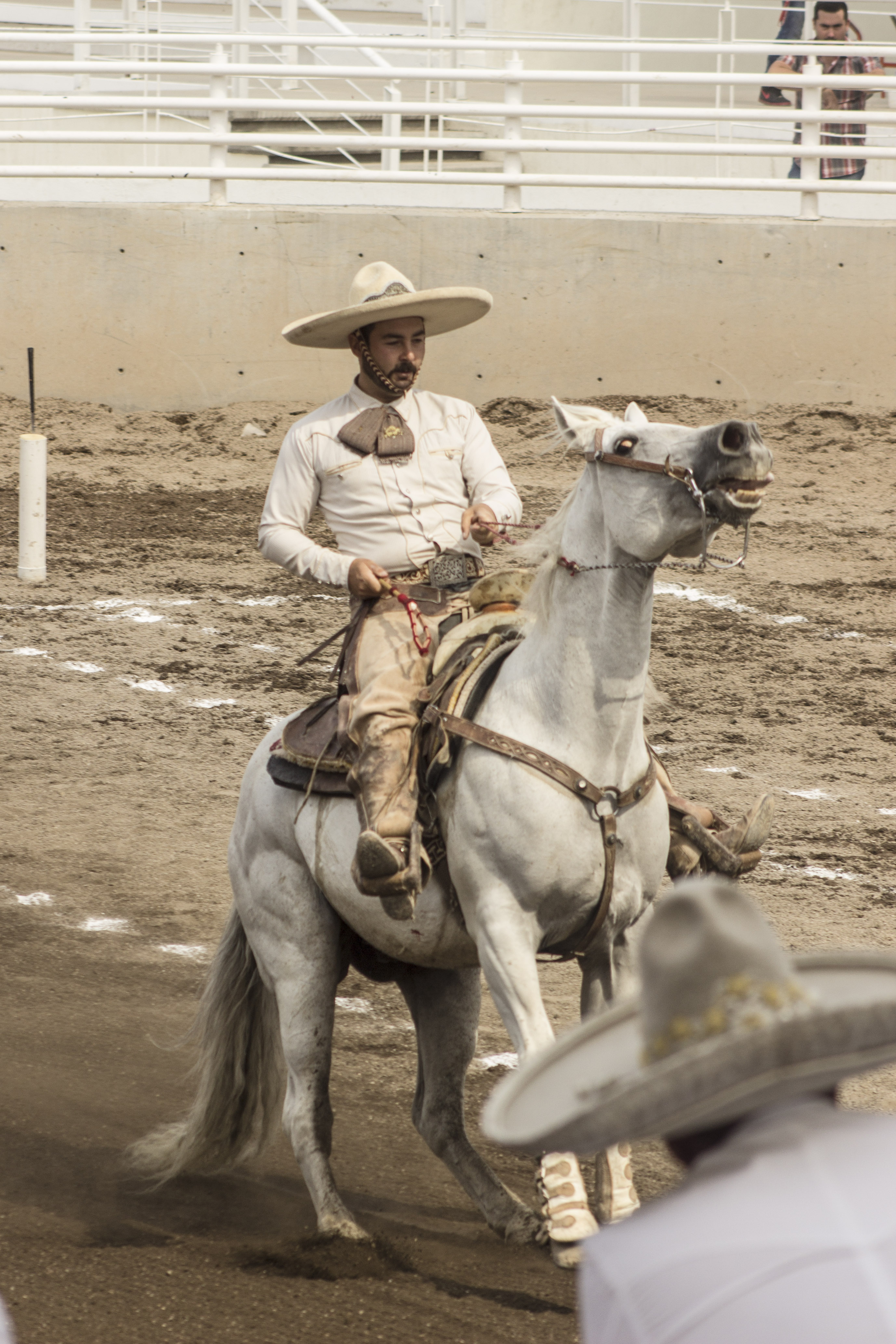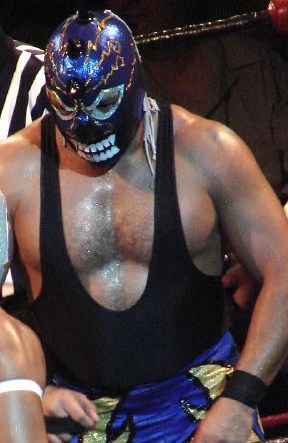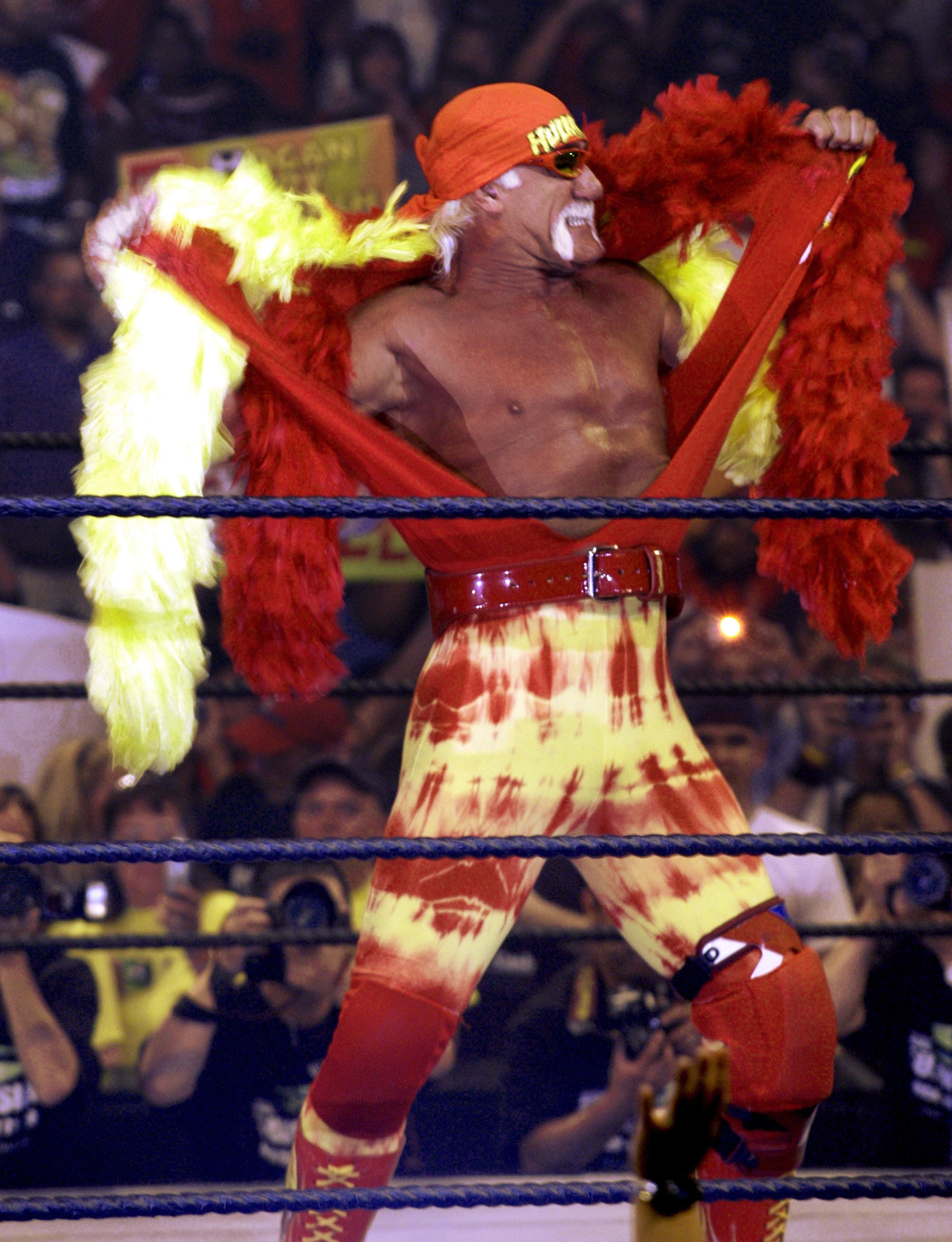|
EMLL 9th Anniversary Show
The EMLL 9th Anniversary Show ( es, 9. Aniversario de EMLL) was a professional wrestling major show event produced by Empresa Mexicana de Lucha Libre (EMLL, later renamed Consejo Mundial de Lucha Libre, CMLL) that took place on September 25, 1942, in Arena Modelo (In the same location Arena México was built years later), in Mexico City, Mexico. The event commemorated the ninth anniversary of EMLL, which would become the oldest still active professional wrestling promotion in the world. The Anniversary show is EMLL's biggest show of the year, their Super Bowl event. The EMLL Anniversary Show series is the longest-running annual professional wrestling show, starting in 1934. Production Background The 1942 Anniversary show commemorated the 9th anniversary of the Mexican professional wrestling company ''Empresa Mexicana de Lucha Libre'' (Spanish for "Mexican Wrestling Promotion"; EMLL) holding their first show on September 22, 1933 by promoter and founder Salvador Lutteroth. EMLL wa ... [...More Info...] [...Related Items...] OR: [Wikipedia] [Google] [Baidu] |
Consejo Mundial De Lucha Libre
Consejo Mundial de Lucha Libre Co., Ltd. (CMLL; , "World Wrestling Council") is a ''lucha libre'' professional wrestling promotion based in Mexico City. The promotion was previously known as ''Empresa Mexicana de Lucha Libre'' (''EMLL'') (''Mexican Wrestling Enterprise''). Founded in 1933, it is the oldest professional wrestling promotion still in existence. CMLL currently recognizes and promotes twelve "World Championships" for various weight divisions and classifications, six national level and six regional level championships. The Consejo Mundial de Lucha Libre Anniversary Shows, CMLL Anniversary Show series is the longest-running annual major show, starting in 1934, with the CMLL 87th Anniversary Show being the most recent. CMLL also regularly promotes major events under the names ''Homenaje a Dos Leyendas'' ("Homage to two legends"), ''Sin Piedad'' ("No Mercy"), ''Sin Salida'' ("No Escape"), ''Infierno en el Ring'' ("Inferno in the Ring") during the year. CMLL has promoted t ... [...More Info...] [...Related Items...] OR: [Wikipedia] [Google] [Baidu] |
Professional Wrestling Match Types
Many types of wrestling matches, sometimes called "concept" or " gimmick matches" in the jargon of the business, are performed in professional wrestling. Some gimmick matches are more common than others and are often used to advance or conclude a storyline. Throughout professional wrestling's decades long history, some gimmick matches have spawned many variations of the core concept. Singles match The singles match is the most common of all professional wrestling matches, which involves only two competitors competing for one fall. A victory is obtained by pinfall, submission, knockout, countout, or disqualification. Some of the most common variations on the singles match is to restrict the possible means for victory. Duchess of Queensbury Rules match A Duchess of Queensbury Rules match is a singles match contested under specific, often disclosed rules is replaced by a title usually meant to sound traditional for one combatant. A wrestler challenging another wrestler to a ma ... [...More Info...] [...Related Items...] OR: [Wikipedia] [Google] [Baidu] |
Charro Aguayo
Charro has several meanings, but it generally refers to Mexican horse riders, who maintain traditional dress, such as some form of sombrero, which in Mexican Spanish are called ''sombrero de charro'' (a charro's hat). The charros could also be thought of as old Mexican cowboys who dress like such, although more modern dress is now seen on those who still work the ranches (''rancheros''). See also, ''vaquero''. Also old Mexican outlaws, bandits, revolutionaries, bounty hunters, and gunmen who wore similar dress are also called ''charro''. The traditional ''charro'' competition '' charreada'' (similar to a rodeo) has become the official sport of Mexico and maintains traditional rules and regulations in effect from colonial times up to the Mexican Revolution. Etymology The word ''charro'' (syn. ''charrar, charra'') is first documented in Spain in the book “Vocabulario de refranes y frases proverbiales” published in 1627 by Gonzalo Correas as a synonym of dumb or stupid pe ... [...More Info...] [...Related Items...] OR: [Wikipedia] [Google] [Baidu] |
Black Guzmán
Miguel Guzmán Huerta (1916 – December 1, 1973) was a Mexican professional wrestler, or ''Luchador'' as they are known in Spanish, who worked under the ring names Miguel Guzmán and Black Guzmán, a nickname he had earned due to his tan skin color. Guzmán was the brother of Rodolfo Guzmán Huerta, better known as the wrestling legend "El Santo", as well as the brother of wrestlers Pantera Negra and Jimmy Guzmán. He was the uncle of El Hijo del Santo and the great uncle of Axel. Guzmán style was centered on the headscissors, pioneering several variations of the Headscissors takedown, and was one of the first ''Luchadors'' to work a fast-paced, aerial style. Guzmán was the first Mexican National Light Heavyweight Champion, winning a tournament in 1943. Guzmán also competed for Texas-based Southwest Sports, Inc. for a number of years, including eight reigns as the NWA Texas Heavyweight Champion and one run with the NWA Texas Tag Team Championship alongside Rito Romero. Bio ... [...More Info...] [...Related Items...] OR: [Wikipedia] [Google] [Baidu] |
Mexican National Light Heavyweight Championship
The Mexican National Light Heavyweight Championship (''Campeonato Nacional Semicompleto'' in Spanish) is a national Mexican singles professional wrestling championship sanctioned by the ''Comisión de Box y Lucha Libre Mexico D.F.'' (''Mexico City Boxing and Wrestling Commission''). Since its creation in 1942, the championship has not been promoted by one specific promotion throughout its existence, but shared between many Mexican promotions. Among others, Empresa Mexicana de Lucha Libre (EMLL), Asistencia Asesoría y Administración (AAA), the ''ENSEMA'' promotion and the Independent circuit but since December 2007 Consejo Mundial de Lucha Libre (CMLL) has had the exclusive rights to the championship.In this statement, the rights refers to the every day use of the championship, determining which storylines the championship is being used in, who gets to challenge for it and how to use it in a public relations sense. As it is a professional wrestling championship, it is not won legi ... [...More Info...] [...Related Items...] OR: [Wikipedia] [Google] [Baidu] |
Professional Wrestling Tournament
On various occasions in professional wrestling, a single-elimination tournament of varying match types are held, often to determine a championship or number-one contendership therein. It has been known for promotions to use title tournament that are fictitious in nature (that is, the title may have been simply awarded under the pretext of winning a tournament elsewhere) - notable ones include the tournaments that established the WWE World Heavyweight Championship, the WWE Intercontinental Championship, and the WWE United States Championship (the latter when it was the NWA United States Championship). In tournaments with a fixed bracket, a multiple-disqualification or a multiple-countout eliminates all parties involved, and those who are slated to face the winner of such a match simply partakes in a match with one less opponent (or simply does not wrestle, if no opponents remain). Tournaments, however, rarely have a final match where only one such finalist remain, with no others qua ... [...More Info...] [...Related Items...] OR: [Wikipedia] [Google] [Baidu] |
Tarzán López
Carlos López Tovar (28 August 1912 – 28 August 1975) was a luchador who was active in the 1930s and 1940s, better known by the ring name Tarzán López. Known as "Tarzan" because of his bodybuilder's physique, Lopez held the Mexican national welterweight championship from 1936 through 1939. He also captured the NWA middleweight title several times and was named MVP in Mexico in 1940, 1944, and 1948. Professional wrestling career Carlos made his professional debut in 1934 under the name Carlos López, and was soon recruited by trainer Gonzalo Avendaño. He was launched into his first feud against Salvador Flores, a feud that made the young López very popular. This popularity eventually resulted in López being signed to Empresa Mexicana de la Lucha Libre (EMLL), where he gained his first title, the Mexican National Welterweight Championship, which he won on March 11, 1936. López was one of the most popular ''luchadores'' of his era, winning the title of Luchador of the Year ... [...More Info...] [...Related Items...] OR: [Wikipedia] [Google] [Baidu] |
Perro Aguayo, Jr
Perro may refer to: * Perro (comics), a super villain in the Marvel Comics Universe * Perro Aguayo (born 1946), Mexican wrestler * Perro Aguayo, Jr. (born 1979), Mexican wrestler * ''Planet Earth Rock and Roll Orchestra'' (album), an album by Paul Kantner * Planet Earth Rock and Roll Orchestra, a nickname for various artists recording in the early 1970s * ''Perro'' (spider), a genus of spiders See also * ''El perro'', a 2004 film * Dave Parro (born 1957), Canadian ice hockey goaltender * Pero (other) * Perri (other) Perri may refer to: * ''Perri'' (novel) or ''The Youth of a Squirrel'', a 1938 novel by Felix Salten * ''Perri'' (film), a 1957 Disney film * Perri (name), a surname and given name * Perri (surname) See also * Peri (other) A peri is a ... * Pirro (other) {{disambig, given name ... [...More Info...] [...Related Items...] OR: [Wikipedia] [Google] [Baidu] |
Perro Aguayo
Pedro Aguayo Damián (18 January 1946 — 3 July 2019) better known as "(El) Perro Aguayo" (Aguayo the dog) and El Can de Nochistlan (The Nochistlan Dog) was a Mexican wrestler through the 1970s to the 1990s. Aguayo was the first person ever crowned the WWF Light Heavyweight Champion, though pre-1997 title reigns are not included in WWE's official history for that title. In 2012, Aguayo was inducted into the AAA Hall of Fame. Aguayo was notably the last major rival of El Santo. Often prone to blading, Aguayo has been described by American pundits as a cross between Terry Funk and Bruno Sammartino (for his willingness to brawl and overpower opponents). One of the biggest box office attractions in lucha libre history, prominent professional wrestling journalist and historian Dave Meltzer described Aguayo as "one of the hardest working and most charismatic wrestlers ever". Aguayo's son also wrestled as Perro Aguayo Jr. or El Hijo del Perro Aguayo ("The Son of Perro Aguayo"). ... [...More Info...] [...Related Items...] OR: [Wikipedia] [Google] [Baidu] |
El Santo
Rodolfo Guzmán Huerta (23 September 1917 – 5 February 1984), known professionally as El Santo or in English The Saint, was a Mexican luchador enmascarado (Spanish for "masked professional wrestler"), actor and folk hero. He is one of the most famous and iconic Mexican luchadores, and has been referred to as one of "the greatest legends in Mexican sports". His wrestling career spanned nearly five decades, during which he became a folk hero and a symbol of justice for the common man through his appearances in lucha films and comic books telling fictionalized stories of El Santo fighting for justice. He starred or co-starred in at least 54 movies between 1958 and 1982. During his career, he mainly wrestled for Empresa Mundial de Lucha Libre in Mexico where he won the Mexican National Light Heavyweight Championship, Mexican National Middleweight Championship, Mexican National Tag Team Championship with Rayo de Jalisco, Mexican National Welterweight Championship, NWA World Midd ... [...More Info...] [...Related Items...] OR: [Wikipedia] [Google] [Baidu] |
Face (professional Wrestling)
In professional wrestling, a face (babyface) is a heroic, "good guy" or "fan favorite" wrestler, booked (scripted) by the promotion with the aim of being cheered by fans, and acts as a protagonist to the heels, who are the villainous antagonist or "bad guy" characters. Traditionally, they wrestle within the rules and avoid cheating (in contrast to the villains who use illegal moves and call in additional wrestlers to do their work for them) while behaving positively towards the referee and the audience. Such characters are also referred to as blue-eyes in British wrestling and ''técnicos'' in ''lucha libre''. The face character is portrayed as a hero relative to the heel wrestlers, who are analogous to villains. Not everything a face wrestler does must be heroic: faces need only to be clapped or cheered by the audience to be effective characters. When the magazine ''Pro Wrestling Illustrated'' went into circulation in the late 1970s, the magazine referred to face wrestlers as " ... [...More Info...] [...Related Items...] OR: [Wikipedia] [Google] [Baidu] |
Heel (professional Wrestling)
In professional wrestling, a heel (also known as a ''rudo'' in '' lucha libre'') is a wrestler who portrays a villain, "bad guy", or "rulebreaker", and acts as an antagonist to the faces, who are the heroic protagonist or "good guy" characters. Not everything a heel wrestler does must be villainous: heels need only to be booed or jeered by the audience to be effective characters, although most truly successful heels embrace other aspects of their devious personalities, such as cheating to win or using foreign objects. "The role of a heel is to get 'heat,' which means spurring the crowd to obstreperous hatred, and generally involves cheating and pretty much any other manner of socially unacceptable behavior that will get the job done." To gain heat (with boos and jeers from the audience), heels are often portrayed as behaving in an immoral manner by breaking rules or otherwise taking advantage of their opponents outside the bounds of the standards of the match. Others do not (or ... [...More Info...] [...Related Items...] OR: [Wikipedia] [Google] [Baidu] |






